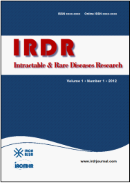BioScience Trends. 2010;4(2):70-76. (DOI: )
Proton magnetic resonance (1HNMR) spectroscopy and physicochemical studies of zaleplon-hydroxypropyl-?-cyclodextrin inclusion compounds.
Shah MR, Sancheti PP, Vyas VM, Karekar PS, Pore YV
Proton magnetic resonance spectroscopy (1HNMR) studies on inclusion compounds of zaleplon with hydroxypropyl-?- cyclodextrin (HP?CD) were carried out in order to elucidate the strength and binding mode of association. Chemical shift measurements revealed that inclusion complexes of zaleplon and HP?CD were formed by penetration of aromatic rings into the HP?CD cavity from the wider rim side with deep penetration of the amide-substituted ring while inclusion of the cyano-substituted pyrazole ring was shallow. A higher magnitude of ??H-3' and ??H-5' protons of HP?CD indicated higher stability of the lyophilized product than the kneaded one. Even from the values of ??H-5'/??H-3', it could be concluded that zaleplon deeply penetrated inside the HP?CD cavity in the lyophilized product as compared to the kneaded product. The stoichiometry of the inclusion complexes was assessed to be a 1:1 molar ratio with an AL-type of phase solubility curve and a stability constant of 57.89







